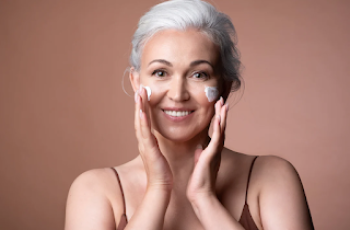What is multi-masking? Our tips for using multi-masking in your skincare routine.
New day, new skincare tips, you’ll want to know more! This is a particular favorite here at Procoal HQ, and here’s why.
Multi-masking is a skincare tip that involves using several different masks at the same time. Are you confused? Don’t worry, that’s about to change soon. Let us explain what it all means with these quick and easy tips. In the end, you’ll regret not trying it sooner!
Skin Prep
Just like using a mask in the traditional sense, it’s best to start with a clean, purified face. Exfoliation also removes any remaining dead skin layers that may prevent the mask from working optimally. Procoal’s Exfoliating Face Scrub is ideal for this. The charcoal beads burst across the face for detoxifying benefits, while the lightweight pumice stone gently yet thoroughly cleanses the skin and opens up the pores.
Think about your skin
The main benefit of multi-masking is that you can tailor the mask to the area you want to treat. With that in mind, take some time to examine your skin and figure out which product will work best for that area. For example, dry cheeks need hydration and a moisturizer or a mask. For blemish-prone skin, there are some clay-based or anti-blemish products that are great for clearing clogged pores.
Don’t forget to shower
If you shower before applying your mask, you’ll find that the warm steam opens up your pores, perfect for all the good ingredients in your mask to quickly absorb into your skin!
Mix it up
You don’t have to always use the same mask formula. Multi-masking is the perfect way to mix and match masks to keep your skin looking its best. Another benefit of mixing is that you can treat rashes without worrying about further breakouts. Procoal’s Instaclear Control Mask cleanses and helps relieve redness or swelling caused by active blemishes! Why not try cutting them into small pieces and applying them to smaller areas of active acne?
Don’t be afraid to apply multiple layers!
Masks don’t have to be applied at the same time! You can always use a detoxifying clay mask first, like Procoal’s Charcoal Mask, and then follow up with a hydrating mask or sleeping mask.
Timing is everything
When using your chosen mask, remember to choose the right time. For example, it’s best to apply the mask that needs more time to set or dry first, and then the other masks that are faster! Then you can remove them all in one go!
Start cutting!
Don’t think that multi-masking only means clay or cream masks. Sheet masks are also perfect for this trend! Cheeks and upper forehead tend to be drier and are suitable for sheet masks. Simply cut the mask into shapes and store the rest in the fridge. Masks will keep for up to 5 days when refrigerated. A great product to try is Procoal’s Marine Hydrating Mask, which provides a lot of moisture and feels wonderful on the skin when cool.
Don’t forget about aftercare
It would be a shame to waste all this time and effort by not putting on makeup straight after the mask. After washing off the residue, it’s best to follow up with a trusted serum and moisturizer. Your skin will feel like Christmas has come early, with lots of love and attention!
Don’t overdo it
You can always have too much of a good thing. Sometimes it’s best to leave your skin alone and let it balance itself out. Try not to use a mask more than three times a week. Stick to your usual skin care routine the rest of the time.
That can be expensive
There’s no denying that this trend can be a costly experience. Using multiple masks costs quite a bit of money. To avoid this, choose products that you’ve used before and are familiar with. If you try something new that you’ve never tried before, your skin may not tolerate it well. So, the mask ends up being tossed in a drawer, never to see the light of day again. What a waste!
So, these are some of our tips, tricks and advice for tackling the multi-masking trend! It takes a lot of dedication, but here at Procoal, we’re a huge fan of this extra “me time”. Even if you only use a multi-mask once a week, or even once a month, you won’t regret it and your skin will thank you!
DQH Knowledge drop: In your 20s, your skin cell turnover decreases. (Cell turnover is a key component in keeping your skin youthful.) You know what else slows down? Your collagen production. Starting in your 20s, collagen decreases by about 1 percent per year. Should you want to prevent fine lines and wrinkles, start by eliminating behaviors that contribute to premature aging. “If it’s bad for you, it’s bad for your skin,” says dermatologist Michel Somenek.
“Cigarette smoking reduces blood flow to the skin and causes premature wrinkling and a dull skin texture. Making the repeated pursed motion to inhale can also cause smoker’s lines. Alcohol and recreational drugs are toxins for the skin that damage its cellular structure and DNA,” Somenek tells us. “The faster you eliminate vices while you are young, the better chance your skin and body have to recuperate.” Also, adopting an anti-aging routine in your 20s is key. After all, the best offense is a good defense. We spoke to Somenek and experts Joshua Ross and Audrey Kunin to find out more.
Keep reading for the best anti-aging products for your 20s, according to skincare professionals.
Sunscreen
“We all know that the sun is the number one cause of skin aging and starting the prevention in your 20s is very important,” Ross says. “The majority of your sun damage won’t start to appear until you’re in your 30s, so don’t wait until you see it surface or you’ll be behind the curve. Stay ahead of it with a good-quality zinc-based sunscreen worn daily.”
Farmacy Green Defense Daily Mineral Sunscreen
An invisible sunscreen with SPF 30, plus botanical extracts meant to protect skin with tons of antioxidants. Bonus: It’s clean and fine to use under makeup.
Bareminerals Complexion Rescue™ Tinted Moisturizer Broad Spectrum SPF 30
Although we recommend you use your SPF and moisturizer separately, we also understand moments when you don’t have time or energy for that extra step. For those times, this bareMinerals moisturizer is a great thing to have on hand.
Vitamin C Serum
“A great introduction to anti-aging is to start with a vitamin C serum in your morning skincare routine,” Ross says. “It’s a powerful antioxidant that will neutralize free radicals and brighten the skin.” He adds that it’s a great way to counteract the effects of the sun’s harmful rays, which, as previously mentioned, are among the biggest causes of premature aging.
Drunk Elephant C-Firma™ Vitamin C Day Serum
The Drunk Elephant C-Firma is a lightweight serum that promises to give skin a glow by combining the brightening powers of vitamin C with ferulic acid, l-ascorbic acid, and vitamin E. The included sodium hyaluronate is meant to replace hydration loss, so you shouldn’t have to deal with any irritation.
Sunday Riley C.E.O. Rapid Flash Brightening Serum
This potent serum is jam-packed with vitamin C (15 percent, to be exact), which means it’s a potential superstar at both brightening skin and dousing it in antioxidants.
Peptides
Using peptides on your skin has many benefits, says Somenek. “The skin barrier is what defends the body against pollution, UV rays, bacteria, and toxins. It can be damaged by several everyday factors. Using topical peptides aids in building a stronger barrier,” he says. “Peptides comprise elastic fibers, which are a type of protein. These fibers help to make skin appear taut and firm. Peptides can also help repair damaged skin, relieve inflammation, and even out skin tone. Some peptides can kill acne-causing bacteria that is common in 20-somethings.”
Kunin agrees, saying, “Peptides are an excellent entry point for supporting collagen.” She recommends looking for face and eye treatments that contain these collagen-boosting powerhouses.
Charlotte Tilbury Magic Eye Rescue Cream
This Charlotte Tilbury super-emollient eye cream has a base of coconut oil and shea butter (read: it’s incredibly hydrating). Botanicals plus peptides are meant to help reduce dark circles and boost collagen, respectively.
This creamy moisturizer serves up potent collagen-boosting peptides and pycnogenol, and antioxidant-rich vitamin C. “Instead of sitting on top of the skin, peptides penetrate the outer layer so they go deep. The ‘signals’ they send tell the cells to produce elastin and collagen, which are needed for youthful-looking skin,” explains Somenek.
At-Home Peel Pads
Remember that skin cell turnover fiasco we talked about earlier? One way to help support it is by exfoliating. “Exfoliation is important to help keep skin fresh and luminous,” Kunin says. She recommends using at-home peel pads as an easy and effective way to exfoliate.
“The goal in your 20s is to fight the slowing pace of cell turnover. It is wise to use products that gently exfoliate, yet still remove oil and other impurities. Products that have Alpha Hydroxy Acids (AHA) or Beta Hydroxy Acids (BHA) are a good choice.”
According to Somenek, you should only exfoliate two to three times a week. “People of all ages are guilty of over-exfoliating and that can be too much of a good thing,” he says.
Dermadoctor Kakadu C Intensive Vitamin C Peel Pad
A few swipes of this Derma Doctor powerful peel pad promise to leave your skin glowing and smooth, thanks to the seven (yes, seven) types of chemical exfoliants, including AHA and BHA. It also contains vitamin C via Kakadu plum extract for added brightening and antioxidant protection.
KEY INGREDIENTS Kakadu plum extract is sourced from the Kakadu plum, a fruit grown in northern Australia. It contains vitamin C, which restores the skin’s natural barrier, increases collagen production, and soothes irritation.
Dr. Dennis Gross Skincare Alpha Beta® Universal Daily Peel Pads
These are the gold standard of peel pads, with a cult following and over 900 five-star reviews on Sephora. They’re easy to use and contain a blend of anti-aging exfoliating acids.
Emollient Night Cream
“In your 20s, you need to start upping the hydration in your skincare routine. You may have been cautious of over-moisturizing because of acne in your teens, but as you enter your 20s, your skin transitions and becomes drier,” Ross says. “I recommend an emollient night cream added into your evening skincare regimen.”
“Twenty-somethings need to make sure that they are not using creams that will clog their pores and cause excess oil production,” says Somenek. Opt for non-comedogenic products.
Cerave Skin Renewing Night Cream
One great choice is the CeraVe Skin Renewing Night Cream, which is a non-comedogenic night cream that leaves skin soft and glowy. It combines the moisturizing powers of ceramides and hyaluronic acid.
RoC Retinol Correxion Max Hydration Creme
“The best night cream ingredients contain retinol, benzoyl peroxide, and/or salicylic acid or hyaluronic acid. The goal is to moisturize, yet remove excess oil,” says Somenek. This Roc Retinol Correxion cream fits the bill as it contains both hyaluronic acid and retinol so it promises to moisturize while also being non-comedogenic.



